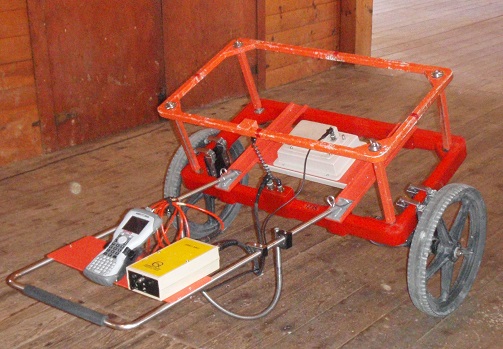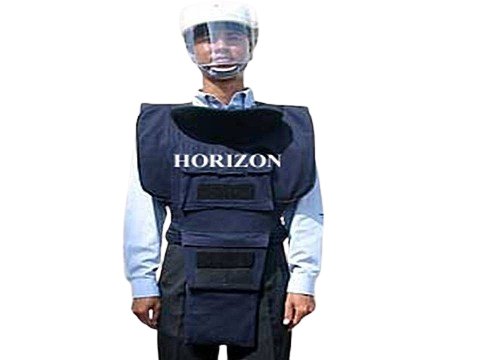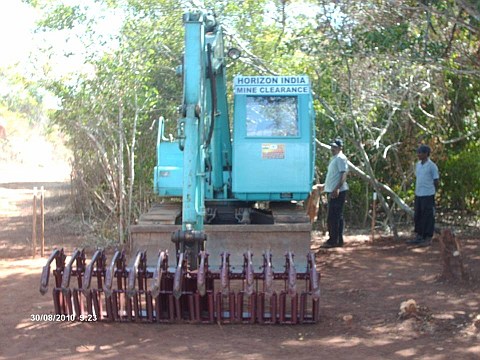
Landmines were first developed during 1916 with the thought of impeding mobility of enemy forces. In the initial stages, mines were bulky with large quantity of explosives and had crude mechanical means of activation. Over the years, with technological advancements, mines have become lighter with less quantity of powerful explosive sand with sophisticated actuation mechanisms. Because of their inherent advantages, landmines are considered as an essential weapon system by armies the world over.
However, with the growing politico-military and socio-ethnic aspirations, the number of conflict situations are on the rise. Adding to this is the problem of low intensity conflicts and insurgency. Professional armies use both anti-tank as well as anti-personnel mines and these minefields are properly marked with accurate maintenance of records. After the end of a war, the concerned army clears such minefields, leading to minimal post war casualties.
However, in the last fifty years, the world has seen the advent of localized wars fought by small armies equipped with first-generation weapon systems. They use the mines indiscriminately and without proper drills and procedures. Another problem is the excessive use of mines by insurgents and terrorists to impede the mobility of security forces and terrorize the civilian population. Unfortunately, children are the main victims of mines. Such indiscriminate use of mines not only causes casualties to civilians but also denies access to farming, transportation, development of roads, canals, and waterways.
An anti-personnel mine cost approximately USD 3 while its removal costs between USD 300-1000 depending upon the type of mine and its location. It is thus obvious that unrecovered landmines are a major menace, which retards the process of post-conflict recovery. Today, landmines are considered the major pollution factor, which is adversely affecting mankind because of their extensive use by non-regular forces.
Owing to these reasons, various non-governmental organizations as well as the United Nations have been involved in mine clearance since 1980 in an effort to reduce the threat landmine pose to innocent civilians throughout the world. This involves a thorough search as for most people living in mine-affected areas, the mere suspicion that the area is mined, renders it useless. Mine Action is the actual process of removal of these mines and making the area safe.
Manual Clearance
Despite a variety of expensive and modern machines, which have appeared on the scene of humanitarian Mine Action, manual methods will always remain at the center stage as the most reliable, dependable, and indispensable. It needs to be highlighted that in accordance with the International Mine Action Standards (IMAS), mechanical methods are to be treated only as preparation of the ground. The actual EOD/UXO clearance and the Mine Action process have to be carried out manually since only manual Mine Action can assure the required 99.8% clearance.
It is in this context, that HORIZON has built up a reservoir of Mine Action staff, meticulously selected from the ex-servicemen who are thoroughly trained and extensively practiced in the field. During any maiden project in a foreign country, the Mine Action team comprises exclusively the ex-servicemen expatriates.
HORIZON has a pool of 200 well-trained ex-servicemen Deminers and has the potential to train additional Deminers from Indian ex-servicemen in just four weeks.
Mechanical System
HORIZON has developed its own ground preparation and Mine Action machines based on excavator cum mechanical raker. These are cost-effective, mobile, efficient, and easy to operate. The utilization of these machines in conjunction with manual Mine Action has significantly improved the speed of clearance.
HORIZON holds a reserve of basic EOD/Mine Action equipment. With its management expertise and dedicated pool of trained EOD personnel / Deminers, HORIZON possesses the ability to undertake a Mine Action project at a short notice from anywhere in the world.
Horizon has been at the forefront of Humanitarian Mine Action in the world.
- Sri Lanka: 16 Mine Action projects executed between 2003-2012
- Jordan: 2 Mine Action projects along with NPA during 2006-2007
Our Clients:
- Royal Norwegian Government (In Sri Lanka)
- Government of India (In Sri Lanka)
- Norwegian People Aid (In Jordan)
Explosive Ordnance Disposal
Horizon undertakes various EOD projects as part of the global mining action.
Kuwait : Executing the EOD project at SEK fields under the Soil Remediation project of TERI (India) since 2012.
Client: Kuwait Oil Company / TERI (India)
Stockpile Destruction
Horizon has the capability to undertake stockpile destruction. Besides conventional methods, we can also undertake stockpile destruction using eco-friendly methods.
Rehabilitation
Rehabilitation is the process of bringing the victim of mining blasts back to a normal living style. Horizon has special cells to undertake this task.
Restoration of Infrastructure
Horizon has cleared 107 KM of disused railway line in Sri Lanka as part of the restoration of infrastructure. Horizon also has the capability to undertake civil and electrical infra projects towards this goal.
Explosive Ordnance Risk Education
Mine Awareness is an educational process of teaching the population about the threat of mines and munitions, living with the threat they impose, and the changing behavior. The education of the populace about the mines, their hazard, and ways to avoid them while living with them is as important as the Mine Action itself.
The training teams from Horizon tour the affected areas and conduct awareness programs with posters and leaflets. Information obtained from the various mine awareness programs forms an important part of the initial survey data.


Capacity Development
Capacity building is one of the tenets of Horizon for the mine-affected areas. Horizon has trained and employed nationals in all its Mine Action tasks in Sri Lanka and Jordon, creating an intrinsic capacity amongst the mine-affected countries in Mine Action.
Capacity Development
Horizon has over a decade of experience in Mine Action. This includes:

